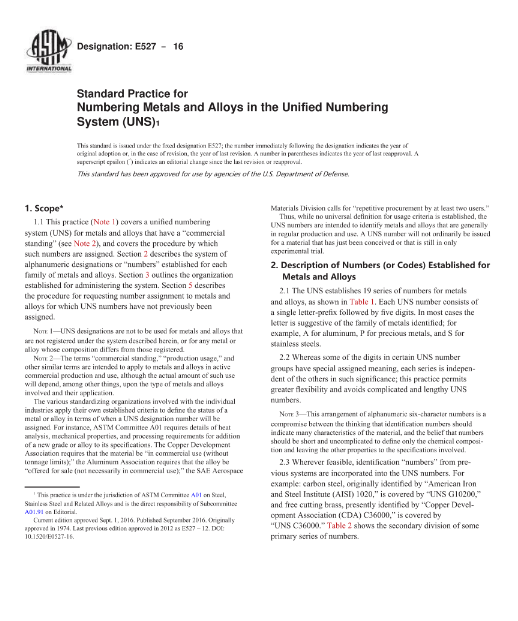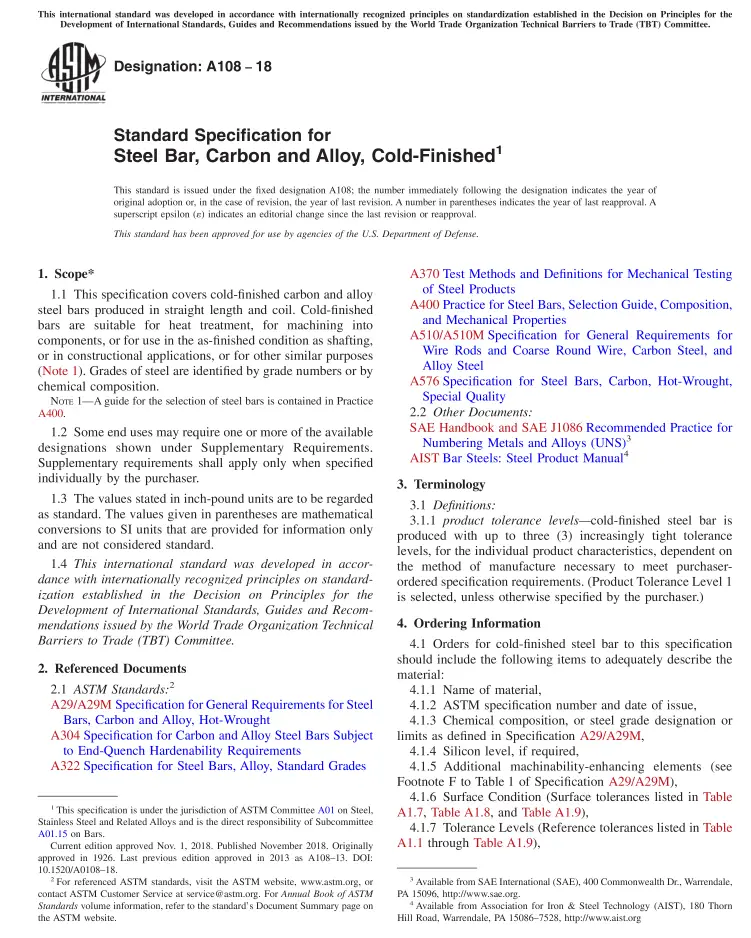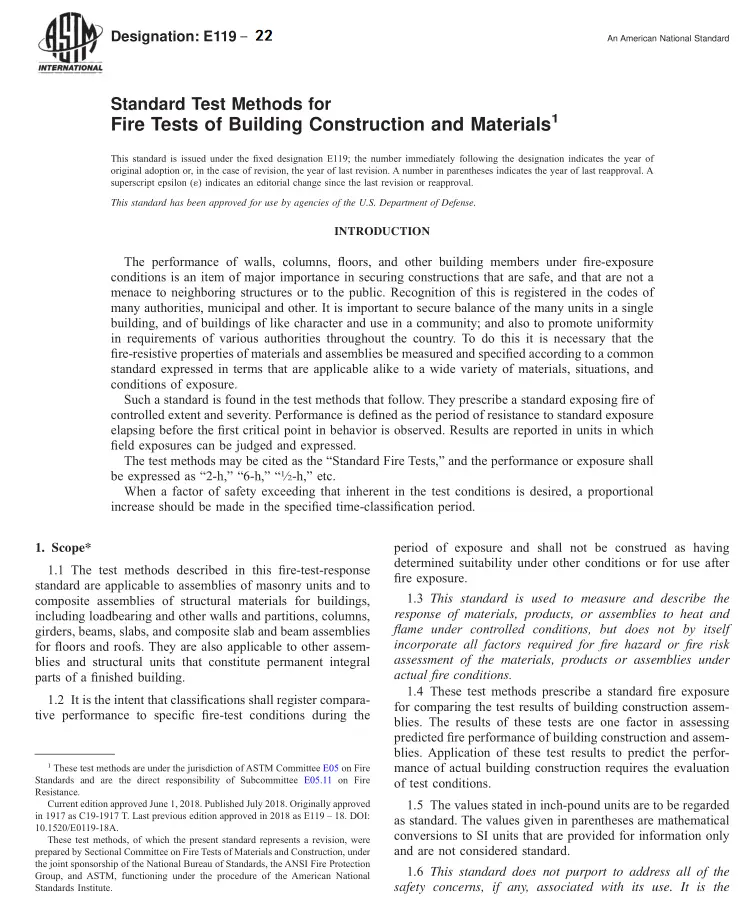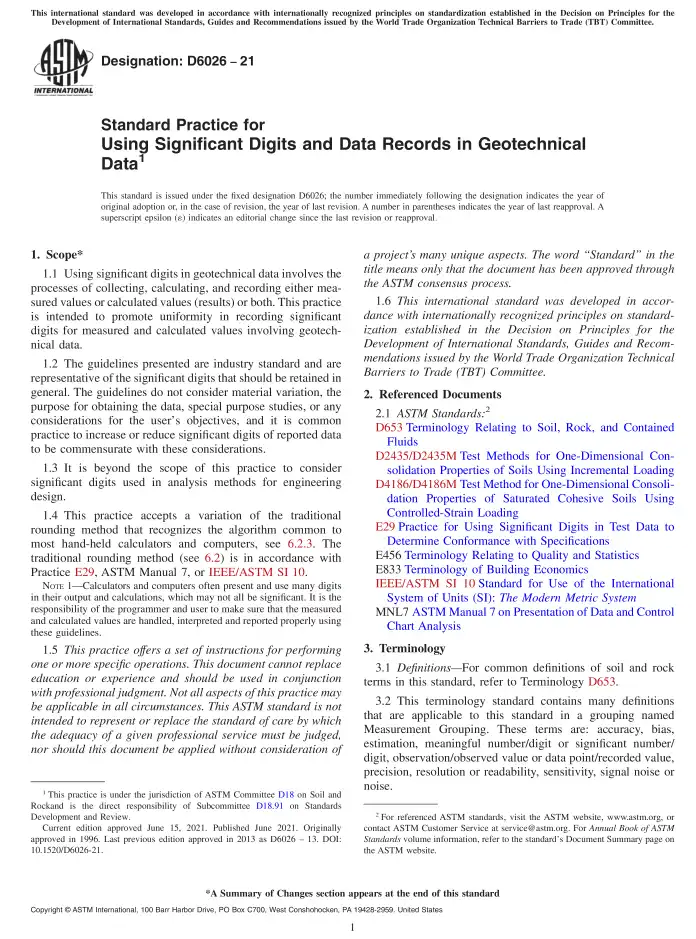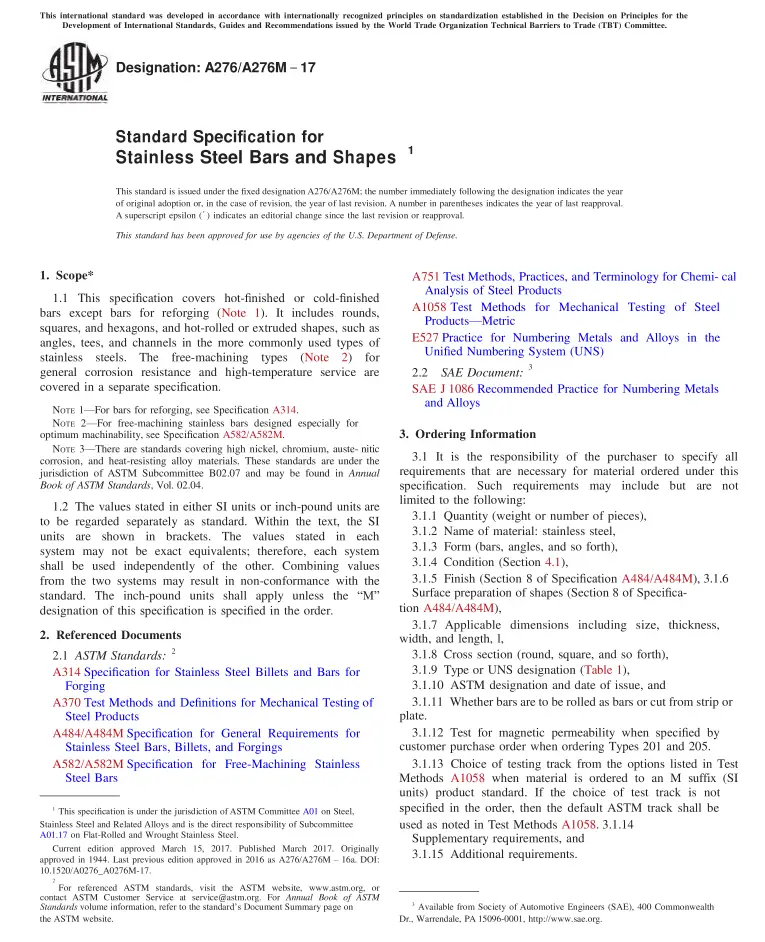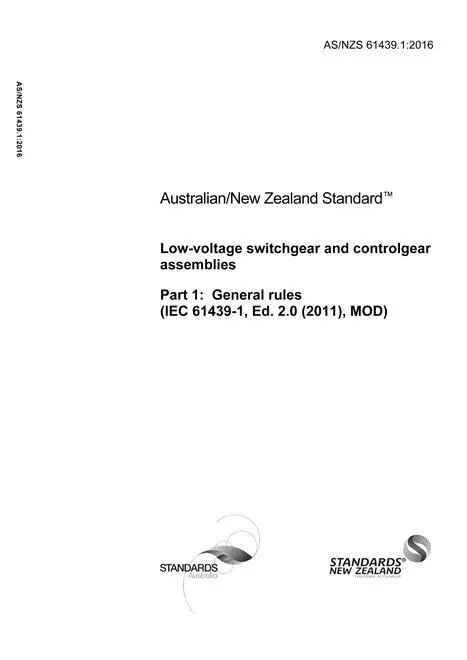ASTM E527, 2016 Edition – Numbering Metals and Alloys in the Unified Numbering System (UNS)
ASTM e527 covers a unified numbering system (UNS) for metals and alloys that have a “commercial standing” (see Note 2), and covers the procedure by which such numbers are assigned. Section 2 describes the system of alphanumeric designations or “numbers” established for each family of metals and alloys. Section 3 outlines the organization established for administering the system. Section 5 describes the procedure for requesting number assignment to metals and alloys for which UNS numbers have not previously been assigned.
NOTE 1—UNS designations are not to be used for metals and alloys that are not registered under the system described herein, or for any metal or alloy whose composition differs from those registered.
NOTE 2—The terms “commercial standing,” “production usage,” and other similar terms are intended to apply to metals and alloys in active commercial production and use, although the actual amount of such use will depend, among other things, upon the type of metals and alloys involved and their application.
The various standardizing organizations involved with the individual industries apply their own established criteria to define the status of a metal or alloy in terms of when a UNS designation number will be assigned. For instance, ASTM Committee A01 requires details of heat analysis, mechanical properties, and processing requirements for addition of a new grade or alloy to its specifications. The Copper Development Association requires that the material be “in commercial use (without tonnage limits);” the Aluminum Association requires that the alloy be “offered for sale (not necessarily in commercial use);” the SAE Aerospace Materials Division calls for “repetitive procurement by at least two users.”
Thus, while no universal definition for usage criteria is established, the UNS numbers are intended to identify metals and alloys that are generally in regular production and use.AUNS number will not ordinarily be issued for a material that has just been conceived or that is still in only experimental trial.
*A Summary of Changes section appears at the end of this standard
General Product Information:
| Revision | 2016 Edition |
| Document Type | |
| Document Language | English |
| Pages | 7 |
| Publisher | ASTM International (ASTM) |
| Status | Current |

